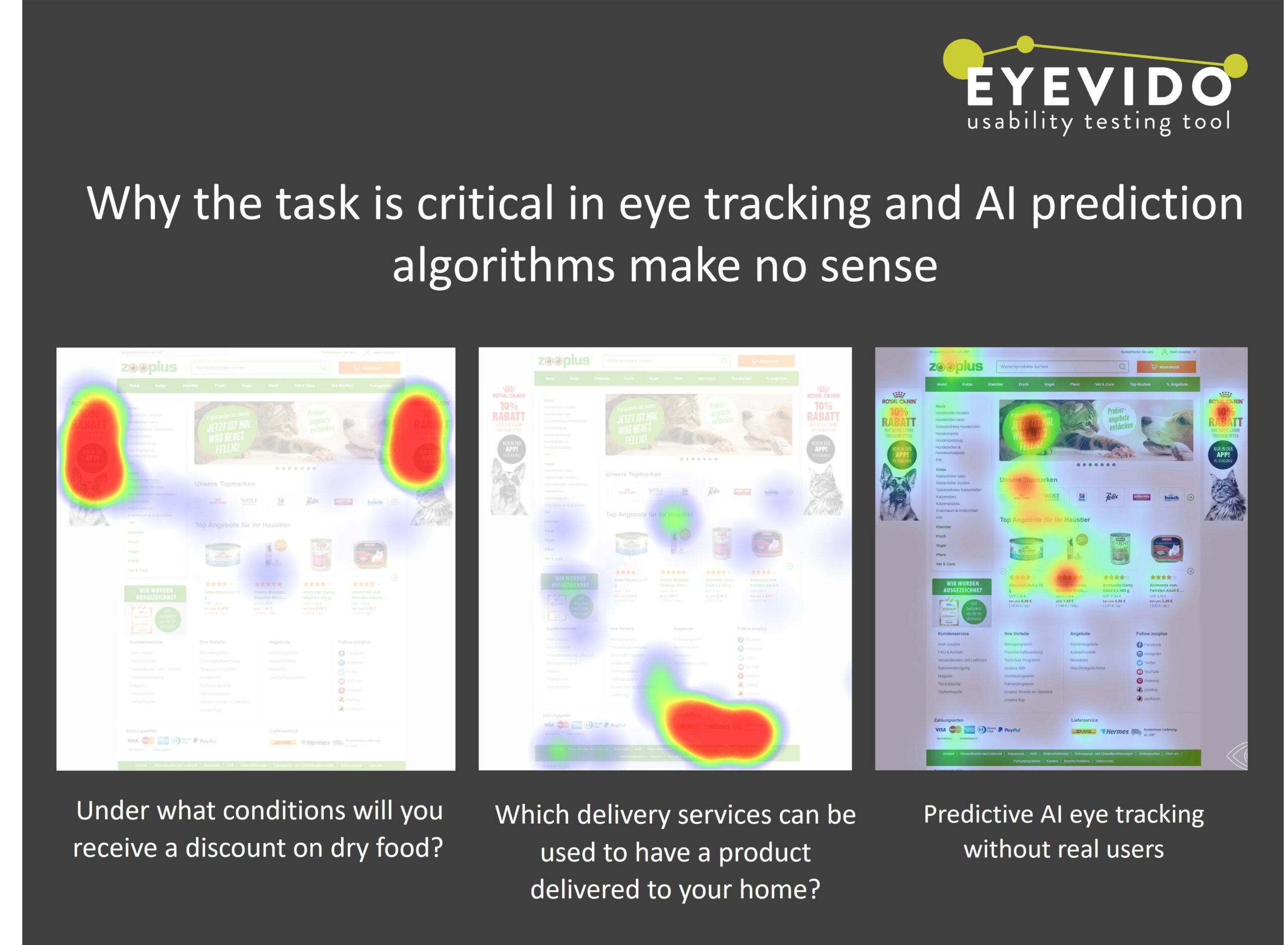Successful websites meet customers’ needs by ensuring that its content is kept as intuitive and accessible as possible. Many companies rely heavily on usability testing to find out exactly what their customers are looking for or whether they face any difficulties when using the website.
Usability studies with eye tracking
In order to objectively evaluate the usability of an online presence and reveal weak points, it is important to look at the website from the unbiased perspective of a potential new customer. Where does the user’s gaze linger on the screen (for a particularly long time)? In what order do they perceive content?
Concrete answers to these questions can be obtained by webcam eye tracking or infrared eye tracking with real test users. In addition, questions (multiple choice, open questions, etc.) can be asked during the test to better understand user behavior.
Eye tracking data is very individual and is strongly influenced by the task at hand. For example, searching for contact information leads to different eye tracking data than simply viewing an advertisement. In our study, we investigated how strong the dependency between eye tracking data and the task is.
Study: Influence of the task on eye tracking data
In our usability study, users were asked to search for a range of different information on Zooplus, an online retailer of pet supplies. The users were given 10 seconds to complete each task. They were asked to search for specific information while their gaze data was recorded with an infrared eye tracker. All users could behave naturally and were not restricted in any way.

The tasks were:
- Find offers for dogs.
- Find out under what conditions you can get discounts on dry food.
- Find out which delivery services you can use to have a product delivered to your home.
- Find out what Zooplus has received an award for.
- Count all the cats.
The eye tracking data clearly shows that there is no clear gaze distribution that all heat maps have in common. How a web page is perceived therefore depends on the intended purpose of the users. Users always have their own individual intention when visiting a website, and their search pattern varies depending on what content they are looking for.
One user may have no trouble finding the desired information about on your website, while another may be very confused and frustrated. This is valuable information that only becomes visible when subjects solve specific tasks.
Challenges of artificial intelligence for the prediction of human perception
To uncover hidden usability errors, it is not sufficient to show test users a website without a task, as this does not evoke typical behavior. Likewise, an AI that automatically generates heat maps does not take the user’s intention into account and cannot represent authentic user behavior.
Since the AI does not include any task in the calculation, the best it can achieve is a general average. However, particularly in usability research, it is not so much the average perceptual distributions that matter, but rather the individual paths users take to reach a goal as quickly and efficiently as possible.
Therefore, specific user instructions with real users are the key factor for a successful usability test. By asking targeted questions, it is possible to determine exactly where problems occur and consequently fix them.
